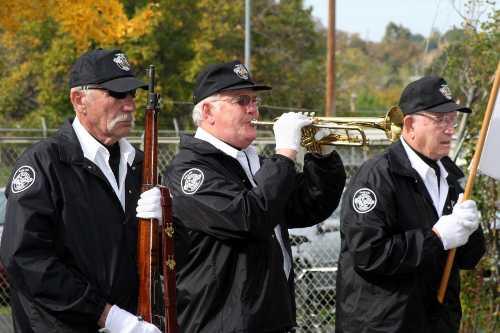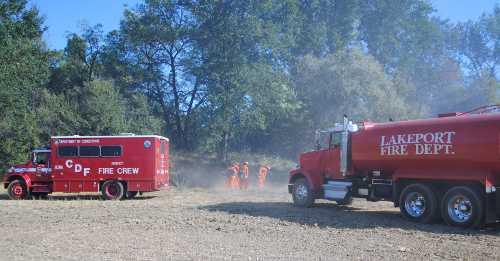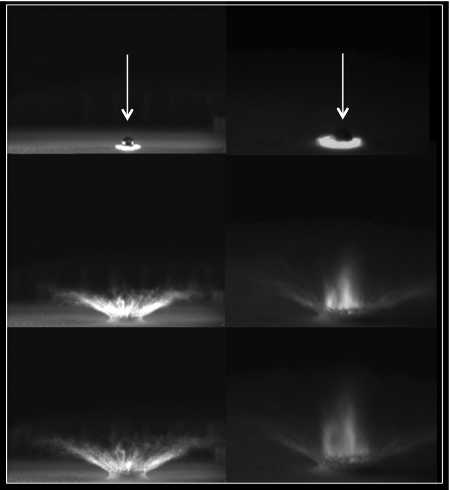LAKE COUNTY, Calif. – Gov. Arnold Schwarzenegger's line item veto of funding for child care services for low-income families has raised concerns that some of those families will go back onto public assistance.
However, Lake County's representative in the state Assembly said the Legislature is looking at a way to turn back the action, taken at the completion of the 2011-11 budget process.
The CalWORKS Stage 3 Child Care Program was the victim of the cut. Schwarzenegger had previously proposed cuts to CalWORKS, but legislators had pushed back.
His office has offered no direct statement on the cuts, which were characterized in the preamble to the new budget document this way: “In order to create a prudent reserve for economic uncertainties, the Governor has exercised his line-item veto authority to reduce General Fund spending by an additional $963 million, raising the reserve level from $375 million to $1.3 billion. These vetoes reflect the Governor’s continued determination to build a reserve and reduce spending to the greatest extent possible, given constitutional, statutory, and court-ordered spending requirements.”
North Coast Assemblyman Wes Chesbro told Lake County News on Tuesday that the CalWORKS funding veto “was not only cruel and vindictive, it was bad for the taxpayers,” and raises the likelihood that the families may have to go back on public assistance.
“It's devastating for the families because these are individuals who have worked their way off of taxpayer supported programs and are supporting themselves and their families,” Chesbro said, adding that Schwarzenegger “pulled the rug out” from under families that have accomplished some measure of independence.
Teri Sedrick, co-director of Rural Communities Child Care, a program of North Coast Opportunities, said the veto “came out of the blue,” and is having devastating effects for some local families.
The state Legislature has been excellent at preserving child care, but Sedrick said Schwarzenegger's action “decimated” the program.
The California Department of Education reported that the program was developed 12 years ago to help working-poor families that are former recipients of aid or are transitioning off of aid by providing child care services so the parents could go to work.
The veto, the Department of Education said, “undermines the efforts of working families, primarily single parents with one or two children, to become and remain self-sufficient.”
The agency said Schwarzenegger's Oct. 8 evening veto terminates needed child care services for more than 55,000 children currently in Stage 3, along with the approximately 1,500 children who will be exhausting their eligibility in Stage 2 on a monthly basis, and will no longer be able to transition into Stage 3 child care services.
In Lake County, Schwarzenegger's action will eliminate child care services for 149 children – from birth to age 13 – and jeopardizes employment for 73 working families and 100 child care providers, Sedrick said. While that may sound like a small number of families, Sedrick said it really isn't.
The Stage 3 program is for families that have been off cash aid for 24 months and are working, said Sedrick.
When a family of two starts to make $1,820 a month, they start paying a family fee which is fed back into the program to support more children, she said.
The program's budget this year put $475,458 directly into the hands of local child care providers, who provide subsidized child care services to the families, Sedrick said.
Based on a 2009 Cornell University study on the economics of child care, Sedrick said every dollar invested in child care provides an economic impact of $3.50 to the economy in goods services and tax revenue, for a local estimated economic impact of approximately $1,664,106.
Senate President Pro Tem Darrell Steinberg has announced that he will seek to reverse Schwarzenegger's veto of the funding and restore the $256 million in child care funds, which was applauded by State Superintendent of Public Instruction Jack O'Connell.
“The governor used his blue pencil to attack California's working poor families,” said O'Connell. “Clearly, these are working parents with children, who are trying to do the right thing to support their families, just the people we should be supporting during these tough economic times.”
But, in the meantime, the state is taking immediate action, Sedrick said.
“We've been told by the state Department of Education that the program ends and all families are to be off the program by Nov. 11 so we've already sent out termination notices,” she said.
Sedrick also cut hours for her 20 employees in Lake and Mendocino counties effective Nov. 1, reducing them as low as possible so they could still get health benefits.
She will reevaluate the situation in 90 days, hoping by then that legislators will have put the fix in place. But if there isn't a fix, Sedrick will have to look at layoffs beginning Feb. 1, 2011.
Sedrick said the impacted families who are currently working, paying taxes and contributing to Lake County's struggling economy will be forced to make difficult decisions between caring for their children or maintaining their employment.
“I don't know what they're going to do,” said Sedrick, adding that the program has never faced such an attack before.
Sedrick said 100 Lake County child care providers, including licensed family child care homes and child care centers, will lose payment for services, placing their businesses at risk of closure.
She said local child care providers are already struggling with high vacancy rates due to the unemployment in Lake County.
Parents search for options
Within days of the veto, the notices began going out to local families.
Maria Shepherd of Hidden Valley Lake, who has a 5-year-old daughter who has benefited from the assistance since she was 9 months old, said the program has helped her considerably as she's raised her children on her own.
Shepherd works four days a week at the Middletown Rancheria tribal office, where she has been employed for four years, and makes too much money to qualify for certain programs, but the subsidized daycare helps her make ends meet and stay employed.
“You really don't want to take away from someone that's trying to help themselves,” she said.
She said she only received three weeks' notice that the services were being cut.
“I have been trying all my options and, actually, I'm just a little stressed,” Shepherd said, adding, “I just really don't know what to do.”
Nakia Brusha, a single mother who lives in Hidden Valley Lake with her three children, said “I work my tail off,” to make ends meet, with no medical benefits and no child support. She signed up for the child care program about a year and a half ago.
Brusha, who works for the Buckingham water district and makes a “decent wage for the area,” said she's extremely grateful to have her job, but the competition is “unreal” in looking for a second job.
That means she would have to commute in order to find more work to make ends meet. “How can I be there for my children if I have to work all the time?”
She added, “I'm not asking for a handout, at all,” explaining that she has worked her entire life.
“This is devastating. It's really devastating. I don't know what we're going to do,” she said.
The cuts also are counterproductive for people who are trying to be independent. Brusha said they may find themselves pushed back into the welfare system. “It's going to knock people backwards.”
Valerie Stark of Lakeport has three children in the program, which she's relied on for three years. The cuts took her by surprise.
She said she's trying to work out something with her daycare provider. At the same time, Stark – who just lost her job, and is separated from her husband – is trying to conduct a job search. She's been approved for unemployment, which makes her overqualified for child care and many social service programs.
Laura Metcalf of Lakeport has three children, all of whom qualify for the program. Metcalf holds certified nursing assistant and phlebotomist certifications, works full-time in the health care field and is taking classes three nights a week to become a registered nurse.
“I'm just a little frustrated,” the single mother said of the cuts.
She has used the subsidized child care program for three years after having worked herself off of welfare.
“I don't want to be on welfare,” she said. “I feel like I've come so far and now they're taking this from me and knocking me back down.”
Metcalf said she doesn't know if she can work and afford child care. “I don't know what I'm going to do. I really don't.”
Care providers worry about children, families
While parents are wondering how to make ends meet and care for their children, local child care providers are looking on with concerns for the impacted families as well.
Terrie Sullivan, whose Precious Moments Preschool in Lakeport has 40 children in three classes, said she anticipates losing two of those children because of the cut in funding.
Sullivan, a child care provider for 33 years, said she's watching parents struggle with choices that will have long-term effects on their children, who are the innocent victims of the governor's action.
Like the parents, Sullivan said providers received very short notice of the changes.
One mother Sullivan knows is facing having to take her 4-year-old and place her in kindergarten early, which Sullivan said may be the mother's only choice, yet could lead to learning problems for the child.
When the 4-year-old child came to her and said, “I can't come here anymore,” Sullivan said, “I had to go in the bathroom and cry.”
She added that she is “extremely, extremely distraught about it” and is waking up at night.
Sullivan said she is willing to offer discounts to parents, but they can't even afford the care services then. She can fill the empty slots, “but I can't help these children,” she added.
“I think there's something wrong with our system when they pay you to bleed the system more,” said Sullivan, who also decried state prisoners having access to the Internet.
She said the tax dollars are well spent if parents are being encouraged to work and make a better life for their children, rather that being forced onto welfare. “We all know children learn by example.”
Kim Beall has run Sunshine Family ChildCare in Lakeport since 1994, offering both daycare and preschool to local children.
Like Sullivan, Beall worries about the parents and children she's worked with for so long. Of the roughly 17 children she serves, she will lose six because of the cuts. Three of those children she said she has had in her care since they were babies.
“The impact is substantial considering that it's mainly affecting those people who are trying to do something to improve their lives,” she said.
Beall says she's watching parents who are trying to go to school and improve their lives have to choose to choose to quit their jobs at a time when jobs are a gift.
With many people out of work now, the need for child care has been reduced, so it's also tough on providers, but Beall said it's tougher on the affected families.
“It's making it impossible for them to move forward,” she said. “These are families where that was their main goal.”
Beall said the cuts, to her, signify that lawmakers – in this case, Schwarzenegger – are far removed from the people whose lives they're affecting.
Some of the state's lawmakers are seeking a way to help those families who need it.
Chesbro said one of the interim solutions the Legislature is proposing to restore the family would include asking the California First Five Commission to provide tobacco tax money to help support the program.
The state Assembly also has accumulated savings from internal budget cuts, and a portion of that money could be used to help, he said.
“That's not a long-term solution, that would just get us through the end of the year,” Chesbro explained.
He said there is hope among legislators that they can do a veto override on Schwarzenegger's action. There's also prospect that whoever is elected governor in November will see the program makes financial sense, he added.
While the Legislature works out those issues, Sedrick and her staff are urging affected families to call state officials to voice their concerns.
Shepherd, Brusha, Stark and Metcalf said they're doing just that, working on e-mails and letters and talking to other parents and their family members to seek support.
“Hopefully we can do something,” Shepherd said.
E-mail Elizabeth Larson at This email address is being protected from spambots. You need JavaScript enabled to view it. . Follow Lake County News on Twitter at http://twitter.com/LakeCoNews and on Facebook at http://www.facebook.com/pages/Lake-County-News/143156775604?ref=mf .






 How to resolve AdBlock issue?
How to resolve AdBlock issue? 















